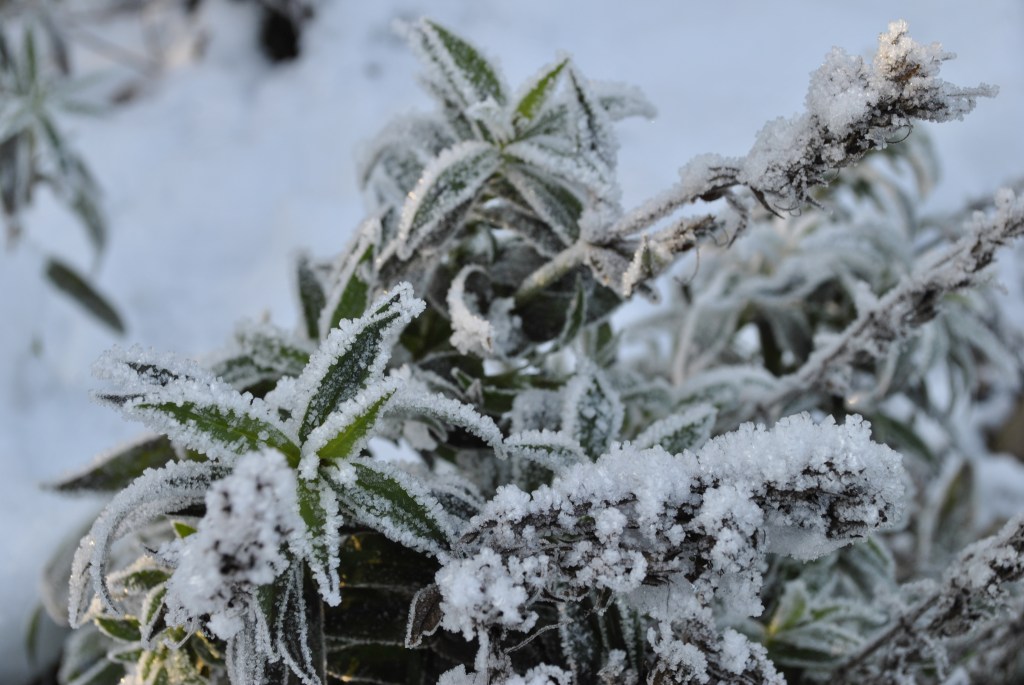
The snow and ice which blanketed the Cotswolds last Sunday is still here but only for a few more days according to the forecast. It has created beautiful wintry scenes but has also brought traffic to a standstill on side roads like ours. Fortunately, the Amazon deliveries have been getting through!

It is truly amazing that anything survives in temperatures of -7 degrees and I am waiting with baited breath to survey the damage. Some losses may not be evident until next year so I will keep my fingers crossed.

My major concern is for my National Collection of Tradescantias which is currently covered by a 4″ duvet of frozen snow. They are reputedly hardy to minus 10 degrees and I hope there is some truth in the theory that the snow actually helps to insulate them from the harshest night time temperatures.

This illustrates the reason to leave seed heads for the birds over winter. The Agastache, Rudbeckia and Echinacea have been a great source of food for Goldfinches and Tits over the last week. They are hard wired to do this, seemingly preferring the natural resources to the many birdfeeders I have around the garden. The Rowan and Pyracantha berries have been stripped by Blackbirds, Redwings and Fieldfares as well as the odd Wood Pigeon, and I have seen more Thrushes in the last week than at any other time of the year.

Funny how everything becomes black and white in the snow! These roses should have been pruned by now but are a thing of beauty on a cold frosty day.

David looks very fetching in his white hat!
Have a great weekend
Hopefully back here on Christmas Eve!
David





